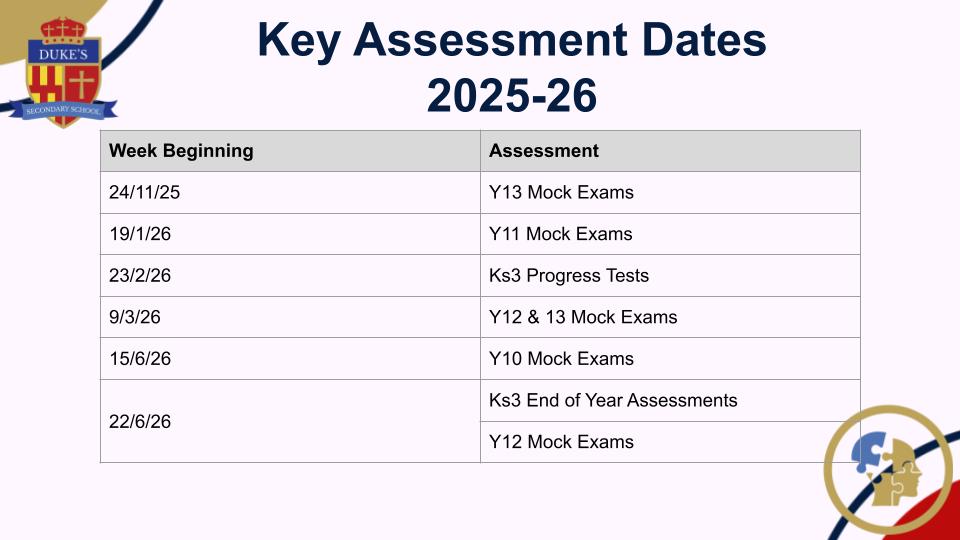

Well done to all of our pupils for achieving the School Games Silver Award and to our staff in the PE department who facilitated the success of clubs, teams and competitions! Your collective hard work and dedication has paid off, congratulations everybody!
Tablets have transformed the way children learn and play, but are they always a safe choice? This #WakeUpWednesday guide focuses on the ever-popular iPad and how to use it responsibly with younger users. We explore key concerns such as exposure to harmful content, data collection by apps and the possibility of screen addiction.
This guide also offers practical advice on using Apple’s own tools to limit screen time, filter content and prevent unwanted purchases. With expert insights and clear recommendations, it’s essential reading for parents and educators keen to make iPad use safer and smarter.
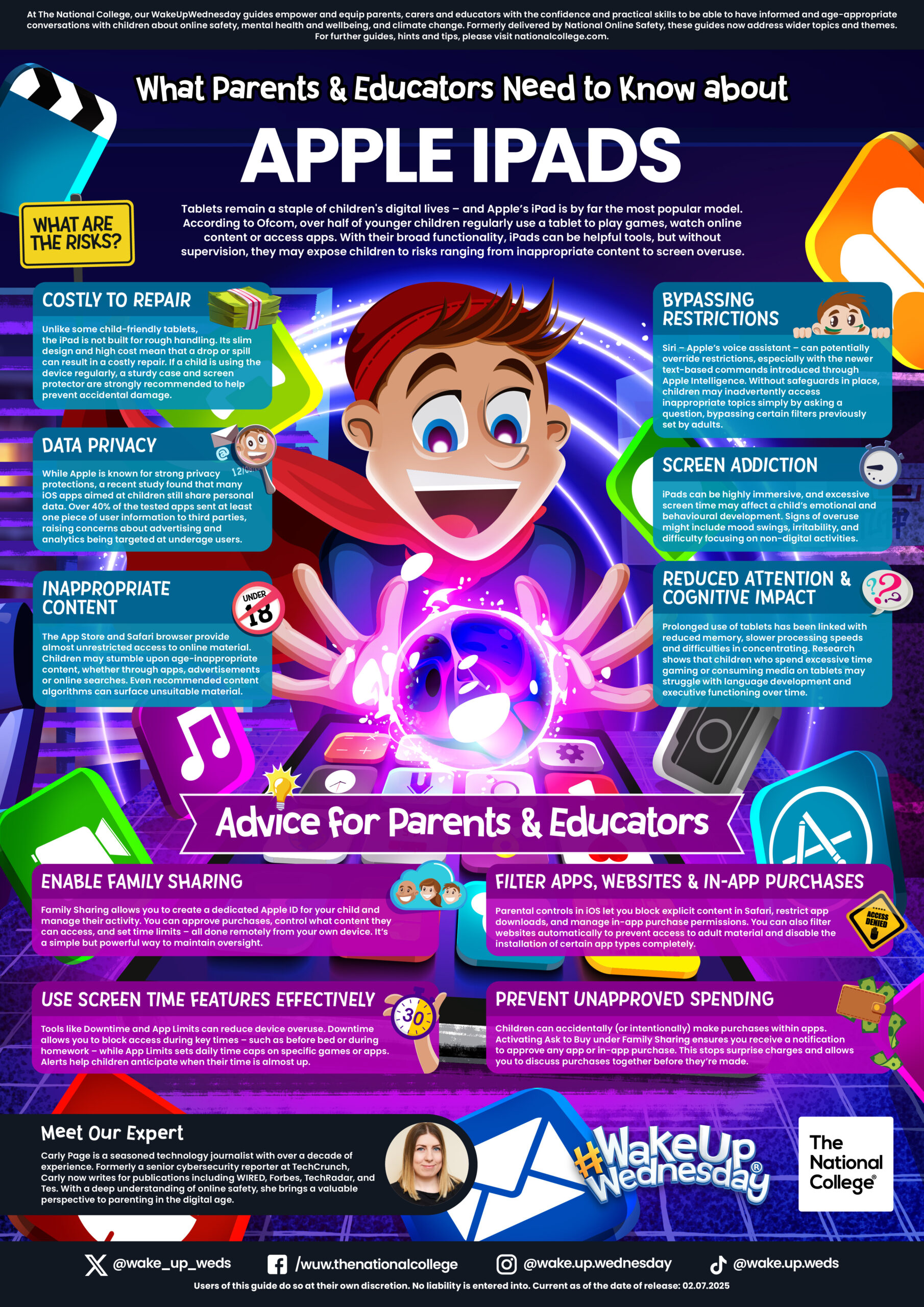
New name, new features… same concerns? The Nintendo Switch 2 is the Japanese gaming giant’s latest console, and while it boasts impressive updates, it also brings a few new features for parents and educators to be aware of.
From the arrival of real-time GameChat and a plug-in camera to an easier path to mature content and in-app spending, there’s a lot to consider. Our #WakeUpWednesday guide sets out what adults need to know, and how they can keep gaming fun and safe for the children in their care

Year 11: 2020 – 2025
A massive congratulations to our exceptional Year 11 students who have completed Secondary School at Duke’s. On Friday 13th June, our Year 11s celebrated their time at Duke’s by signing farewell messages on each other’s beautifully decorated school shirts, ahead of their assembly dedicated to all of the memories made during their time with us. Emotions were high as we took a look back upon the years spent at our school, including many throwback photos from their journey dating back to Primary School within NCEA Trust. The whole school then came together to applaud the students on their ‘Walk Out’ for their achievements.
Dear Class of 2025 Year 11s,
What an extraordinary journey you’ve embarked on since joining us in 2020. No other cohort has navigated the unique trials and triumphs you have, overcoming unprecedented challenges due to COVID-19 – and rising above them. We couldn’t be prouder of the incredible progress each of you have made. Your resilience against set-backs and collaborative teamwork have shone brightly throughout your journey at Duke’s.
We couldn’t be more proud of the determination you’ve demonstrated in preparation for your GCSE’s. Take a moment to truly appreciate how far you’ve come, you all deserve to be immensely proud of your accomplishments. It’s been an absolute privilege for all your teachers to witness your growth and watch you all blossom into the people you have become. Keep on letting your light shine! Wishing each of you the very best of luck in the future and we look forward to seeing what you achieve as you begin the next chapter.
“Thank you year 11 for all the laughs over the last five years. It’s certainly going to be a quieter time on duty without you all. To my English class, you’re all absolute stars. Good luck on the next adventure, and remember, ‘ I don’t play golf!’.” – Mrs Wilkinson
“Year 11, I’ve always had a soft spot for you, (as some of you know) as I have a daughter the same age. This makes me feel as though I have been a closer part of your journey through secondary, as I’ve parented a child through the same things at the same time. I felt your worry when you started year 7 mid covid. I felt your angst as you were choosing your options, and I’ve felt the build up to you sitting your GCSE’s.
I actually cannot believe that you, and her, are ready to leave school. The last 5 years have gone by in the blink of an eye!! Those of you who I have taught PE….thank you. I’ve enjoyed sharing the last five years with you and I hope you have enjoyed at least some aspects of PE if not all.
I wish you all the very best in the next stage of your journey – whether that be here at Dukes or pastures new. Good luck for August 21st – I’ll be thinking of you all.” – Mrs Davies
“Art Students….You have been amazing!! Epic!! Wonderful!!!. It has been a delight to teach you and see you flourish in Art.” – Mrs Gatti
“It’s been such a joy to work with you over the past 5 years, I’m so proud of how you’ve matured and grown into the lovely people you are. Wishing you every success and happiness in your futures.“ – Mrs Wardle
“Best of luck to all of you in the future, sure you’ll go on to achieve amazing things! Shout out to my year 11 business class, my first ever KS4 class I’ve had for the 2 years; it has been a delight & pleasure teaching you all these last two years, we’ve had some great times, memories & laughs, you’ll be a big miss! & can’t wait to see your amazing results in the summer & all the great things you’ll achieve in your future!” – Mr Hart
“Well done on all the hard work you have put in with your exams. Enjoy the summer and whatever your next adventure is. Go and be amazing!” – Mrs Henderson
“What a year we have had year 11 – ups and downs and lots of class changes! Well done for all your hard work and getting through the exam period. I wish you all the best in whatever the future holds for you!” – Miss Weaver
“Good Luck Year 11! I hope all your dreams come true. Remember don’t limit your challenges, challenge your limits.” – Mrs Barker
“Today is both the end and the beginning (that’s a juxtaposition) as we say goodbye to you all as you walk into a whole new, exciting chapter of life. Whatever your plans for the future, remember you have the resilience and strength to face all challenges. Go forward with confidence, take care of yourselves and take pride in all you do. Best wishes to you all!” – Mrs Chima
“Year 11 – your struggles will always be worth it…remember that failure is the key to success!!” – Mrs S, Mrs F and Mrs W in Hospitality
“It has been a pleasure to see so many of you grow into mature and responsible young adults. You all have so much potential – use it, don’t waste it. Be determined, be focussed, be responsible and kind and the world will be yours. Also remember the old cycling saying, ‘ Sometimes the wind is at your back and sometimes it is directly in your face, but whatever way it is blowing and however hard it is, keep turning the pedals and you will eventually get to where you want to be. Good luck everyone, It has been a pleasure.” – Mr Line
“Year 11, Good luck in all your future endeavours” – Mrs Carter
“As the ‘Covid year group’ you faced challenges no one could have predicted. Remote learning, cancelled events, uncertainty, and a whole lot of screen time.
But you adapted, you showed resilience, and you got through it – and that says so much about who you are. Watching you all arrive that September – slightly too small for your blazers, being in bubbles and encouraging you to sanitise your hands every 5 minutes.
You were my last year group as head of year, however I’ve kept a close eye on you all – through your highs, your struggles, and everything in between. I’ve seen you grow into confident, capable young people.
You’ve now reached the end of Year 11 – a huge achievement in itself. Whether you’re heading to sixth form, college, apprenticeships, or something totally different, you’ve got everything you need to succeed. You are more prepared than you think, and more capable than you know.” – Mrs Young
“Don’t forget to “let your light shine” come and say hello if you see me out and about.” – Sally
“To Year 11 EN4, I have loved being your English teacher! I have loved the ups and downs, the breakthroughs and the moments where it clicks. I have loved seeing you grow and mature into young adults with so much potential. Whatever comes next for you, know you always have a place in this world. It is never too late to start over, try something new or make a change. Take good care of yourselves.” – Mrs Hartley
“Year 11 – ICT, as you come to the end of your ICT journey, we want to take a moment to say how incredibly proud we are of each and every one of you. You have all worked with dedication, resilience, and determination to achieve your grades, and your effort has truly paid off.
It’s been a pleasure to see you all grow in confidence and capability over the course of the year. We have no doubt that whatever path you choose next whether it’s further study, apprenticeships, or stepping into the world of work you will continue to succeed. Wishing you all the very best for the future. Keep believing in yourselves, and never stop learning. Best wishes!” – Miss Miah and Mr Caddies Green
“As you finish year 11, it’s probably become clear that there are 3 types of people in this world… Those who can count and those that can’t. All the best for the future – Its been interesting knowing you.” – Mr Butler
“Congratulations on completing Y11. Always try to be a better version of yourself. Grades are important but they are not everything. Never get upset with a failure. It’s just a new beginning of another journey. Set your goals high and always dream big. Because you’re only as big as the dreams you dare to live.
Don’t forget our 80% attitude/20% ability motto, it will serve you well in the future! Hard work beats talent, when talent doesn’t work hard. Best wishes!” – Mr Blight
“To my brilliant Year 11 BTEC Sport legends,
Just wanted to say how proud I am of the effort, energy, and questionable stretching techniques you’ve brought to BTEC Sport this year. Honestly, you’ve tackled assignments, smashed practicals, and survived more PowerPoints than any human should ever have to. That deserves serious respect.
You’ve learned muscles I forgot existed (hello, gastrocnemius ), memorised enough fitness tests to start your own gym, and probably heard the words “principles of training” in your sleep. You’ve lifted, lunged, laughed (sometimes at me), and powered through like absolute pros.
I know it’s not always easy balancing coursework, practicals, and the occasional running rings around the 3g whether it’s football, cricket, rounders, you guys brought a respectful laugh and made me smile ear to ear with your witty sarcasm – you’ve shown up, stayed strong, and worked hard. That’s what makes you BTEC beasts.
Keep pushing yourselves, not just in sport, but in everything. And remember: no matter what, you’ve already proved you’ve got the determination, the grit, and the banter to smash whatever comes next. Proud of you. Even when you forget your kit. I’m a big fan of you all, good luck.” – Miss Mckinney
“Veni, vidi, vici (Julius Caesar ) “I came; I saw; I conquered” – You have overcome many years of school and learning and you will go on to be more successful in life. Remember, every challenge is a battle and one you can always win! I wish you all the best of luck.” – Mr Tarling
“It has been a pleasure watching you all grow during your time at Duke’s. Remember to dream big and achieve big! I wish you every success and am so proud of everything you have accomplished. Good Luck!” – Miss Ireland
“When you look back at your time at Duke’s, you won’t remember the lessons your teachers spent hours planning, or the fantastic work you produced. What you will remember is how it felt to be part of Duke’s family.
The staff that encouraged and supported you, the friends that made you feel important and the stability that you had. As you move through to your next chapter, surround yourselves with positive people, aspire to make a difference in the world and never forget…..once Duke’s, always Duke’s. Best of luck, Year 11’s 2025!” – Mrs Chapman
“Well guys, Lets reflect…… There have been some great times, and some good times, some trying times, some emotional times and some tough times. That’s what life is about. Its about experiencing , learning and growing.
I hope you can all take away positives from your time here and look back knowing that it was a time of growth and maturing. Keep going on life’s journey….whatever that holds for each one of you. Grab each opportunity that comes your way with both hands…. And remember, (those who know, know) keep putting your big girl/boy pants on and go for it….you can do this. You will be missed!!!” – Miss Graham, Head of Year 11
“It has been a pleasure to oversee your education here at Duke’s. You are a fantastic group of kids, and I wish you all the best for your future lives. If you work hard and be kind I’m sure it will be filled with happiness and success.” – Mr Atkinson, Headteacher
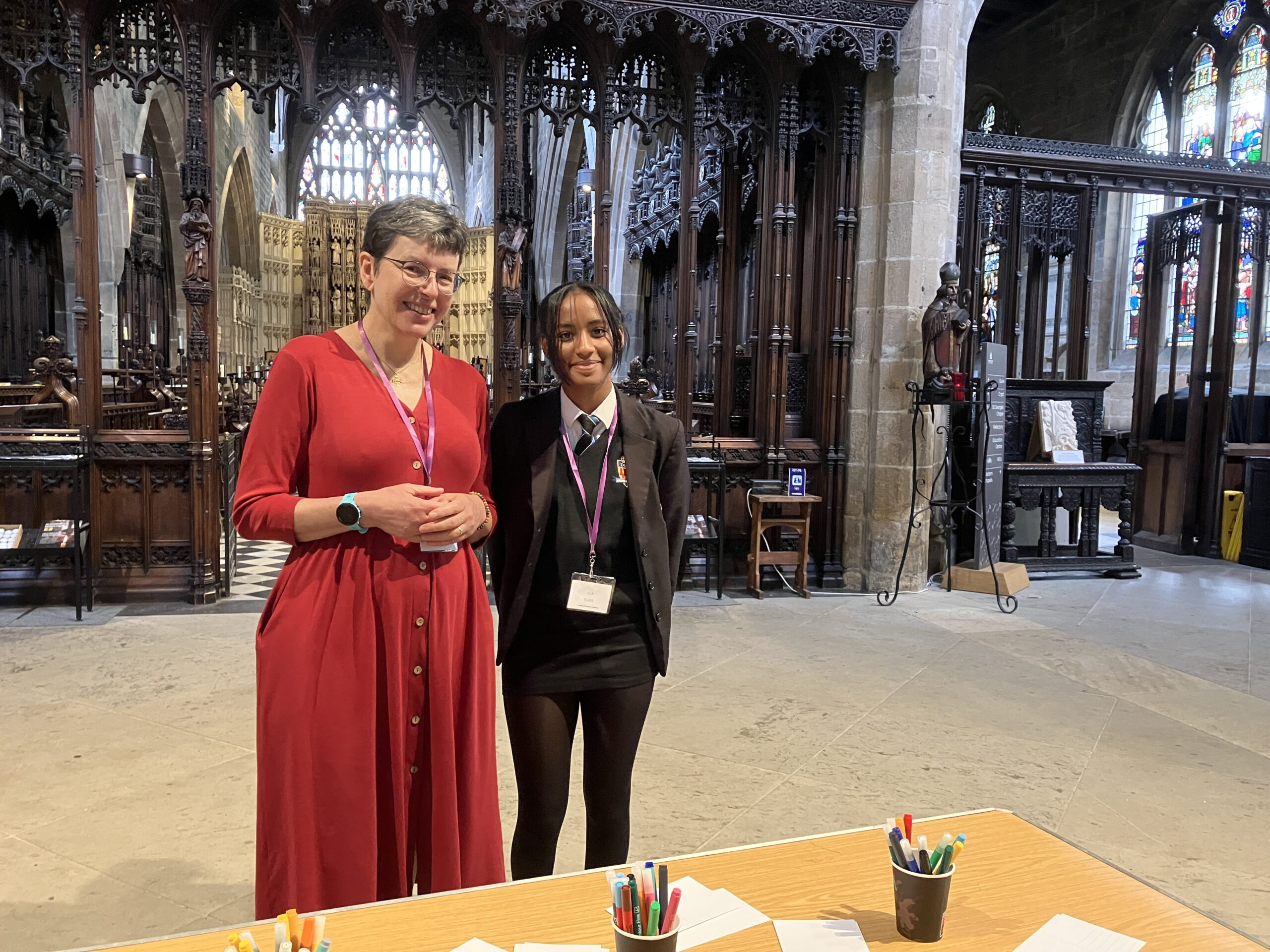
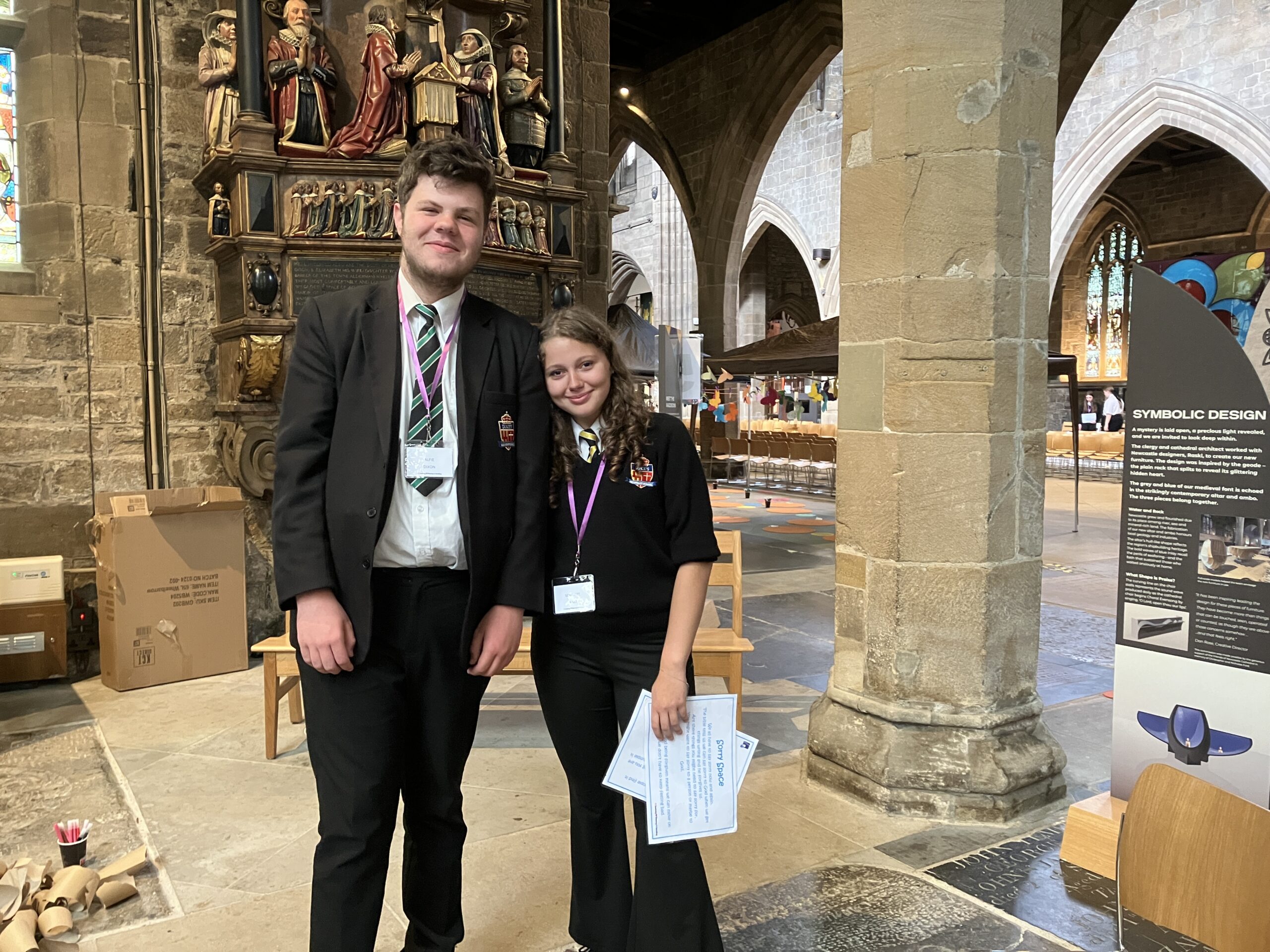
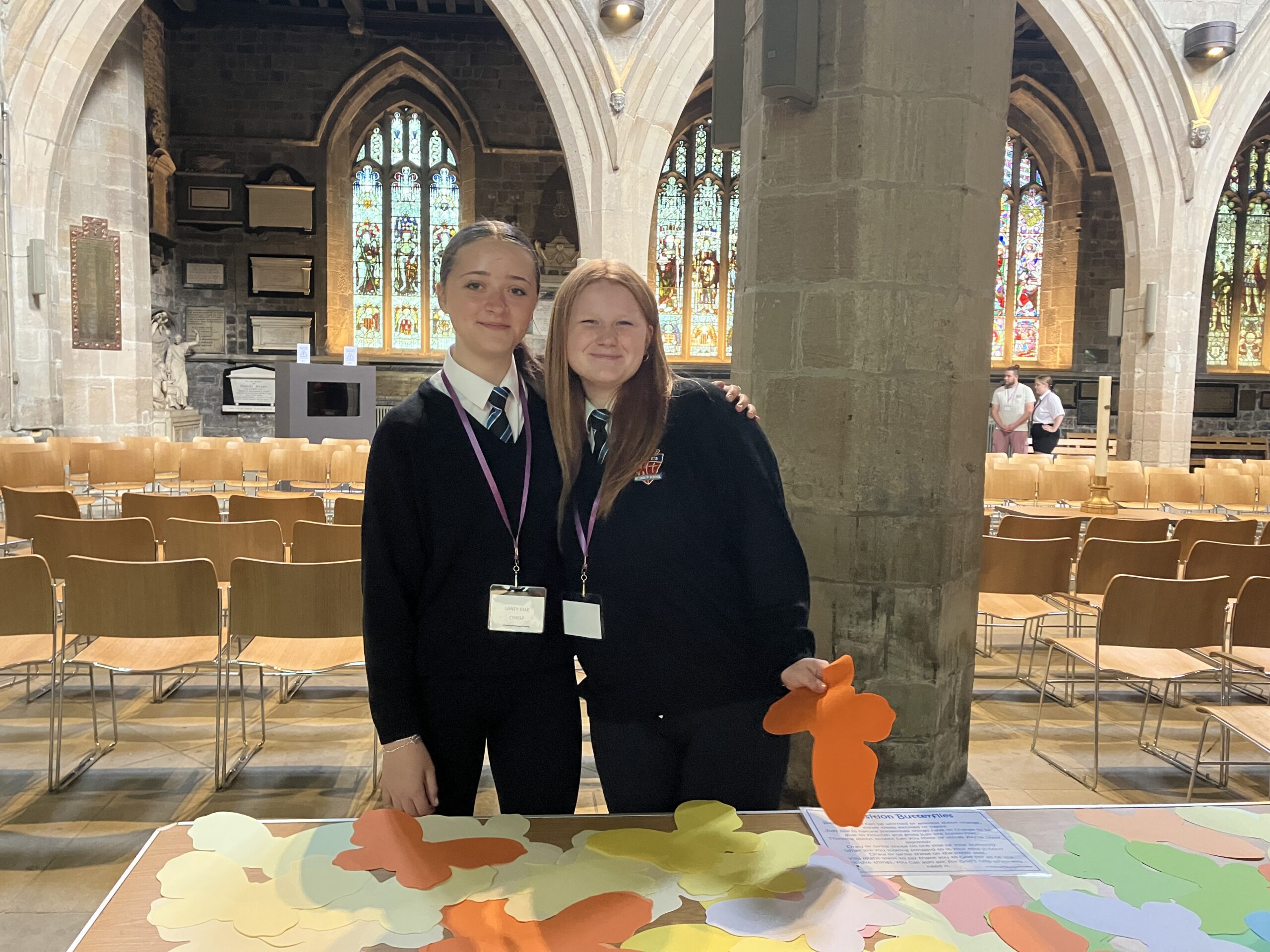

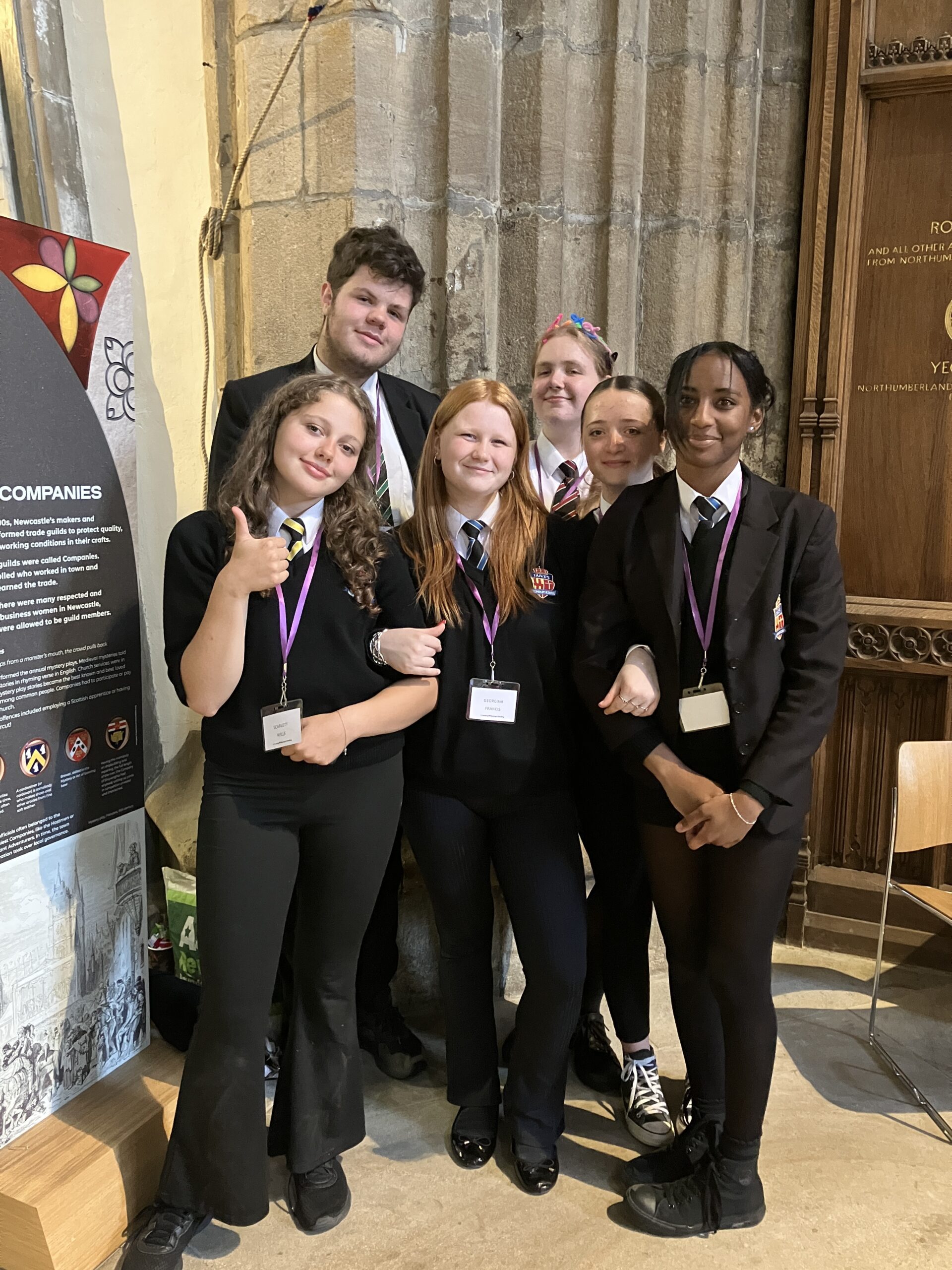
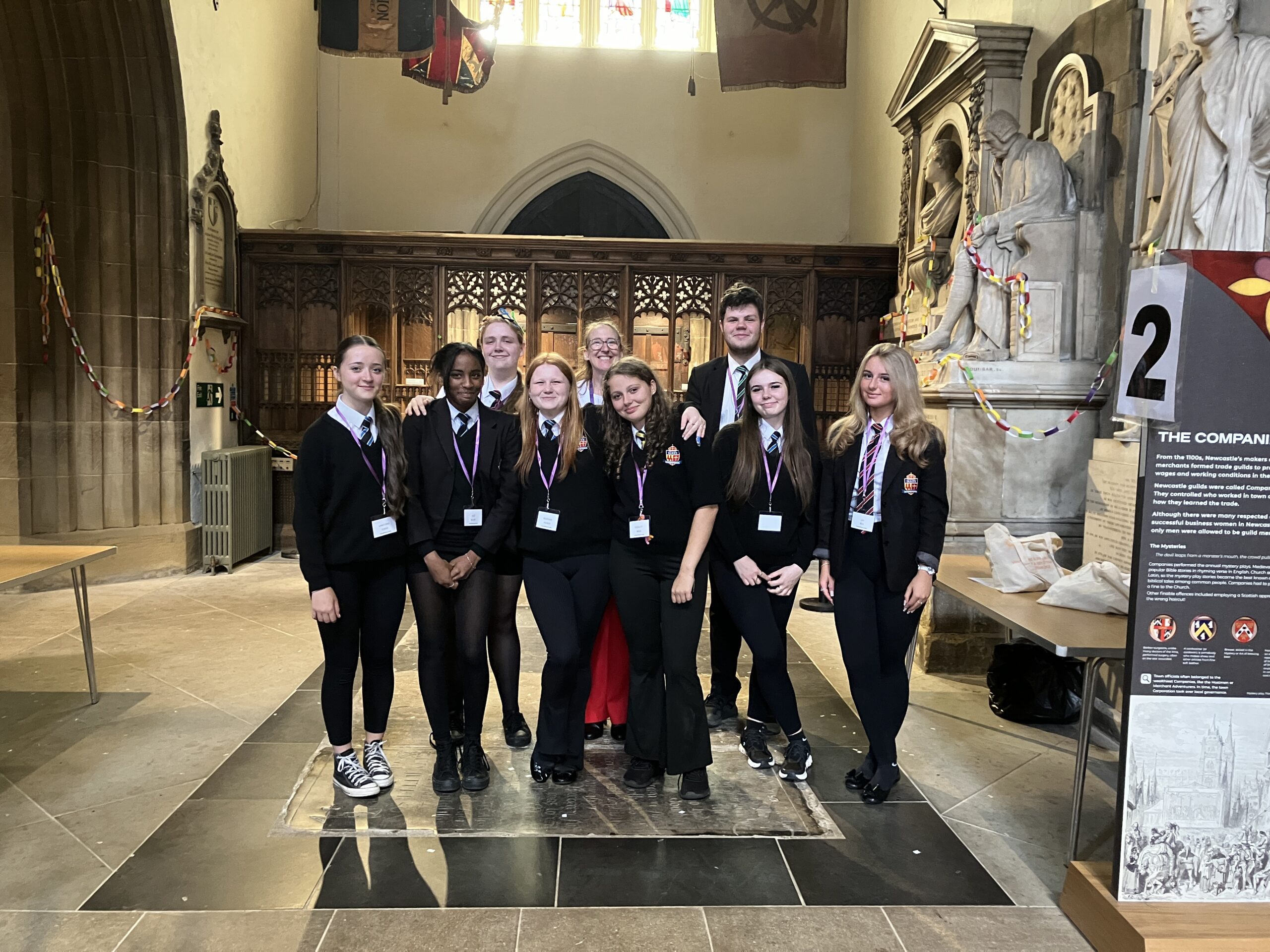
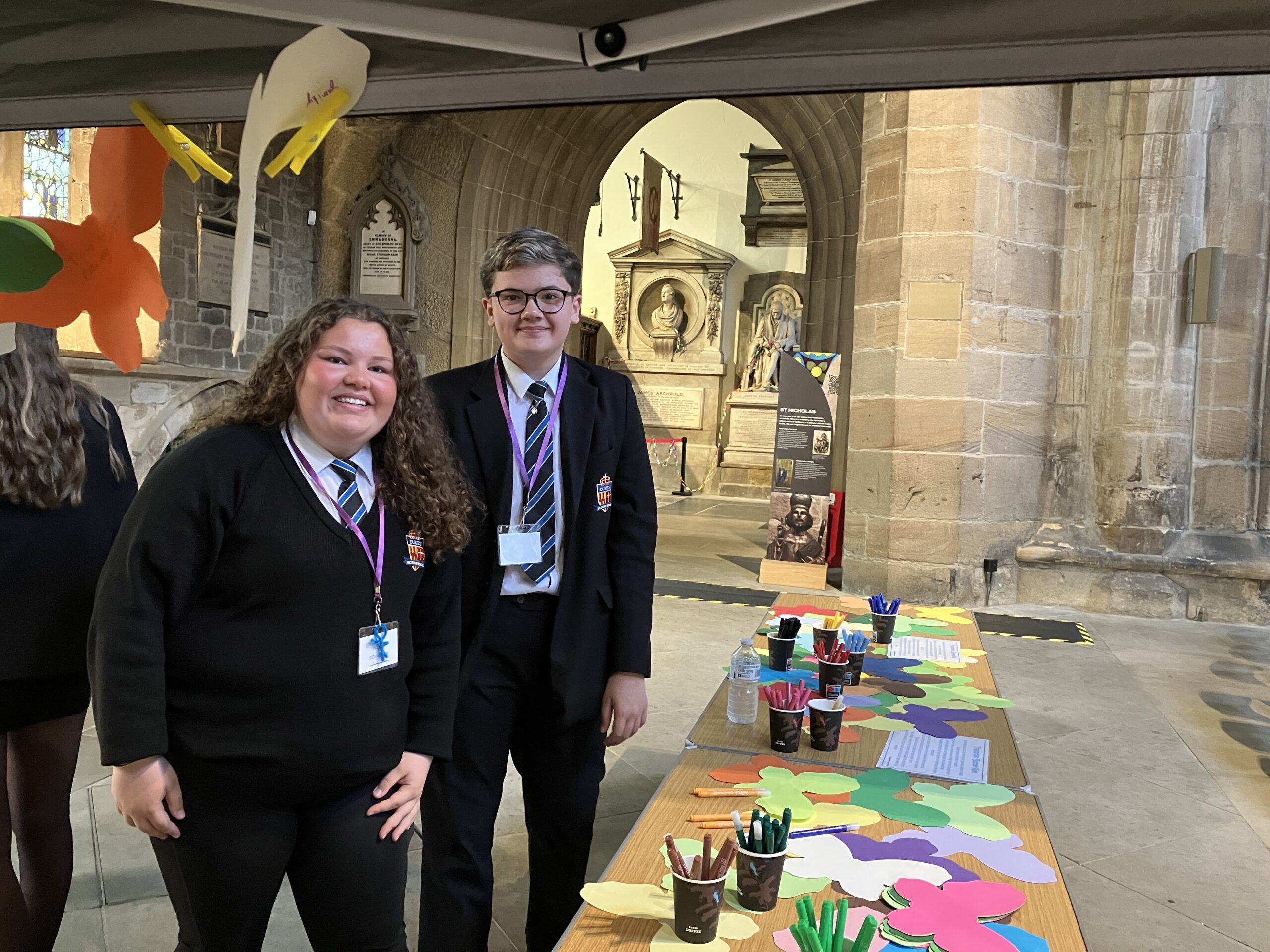

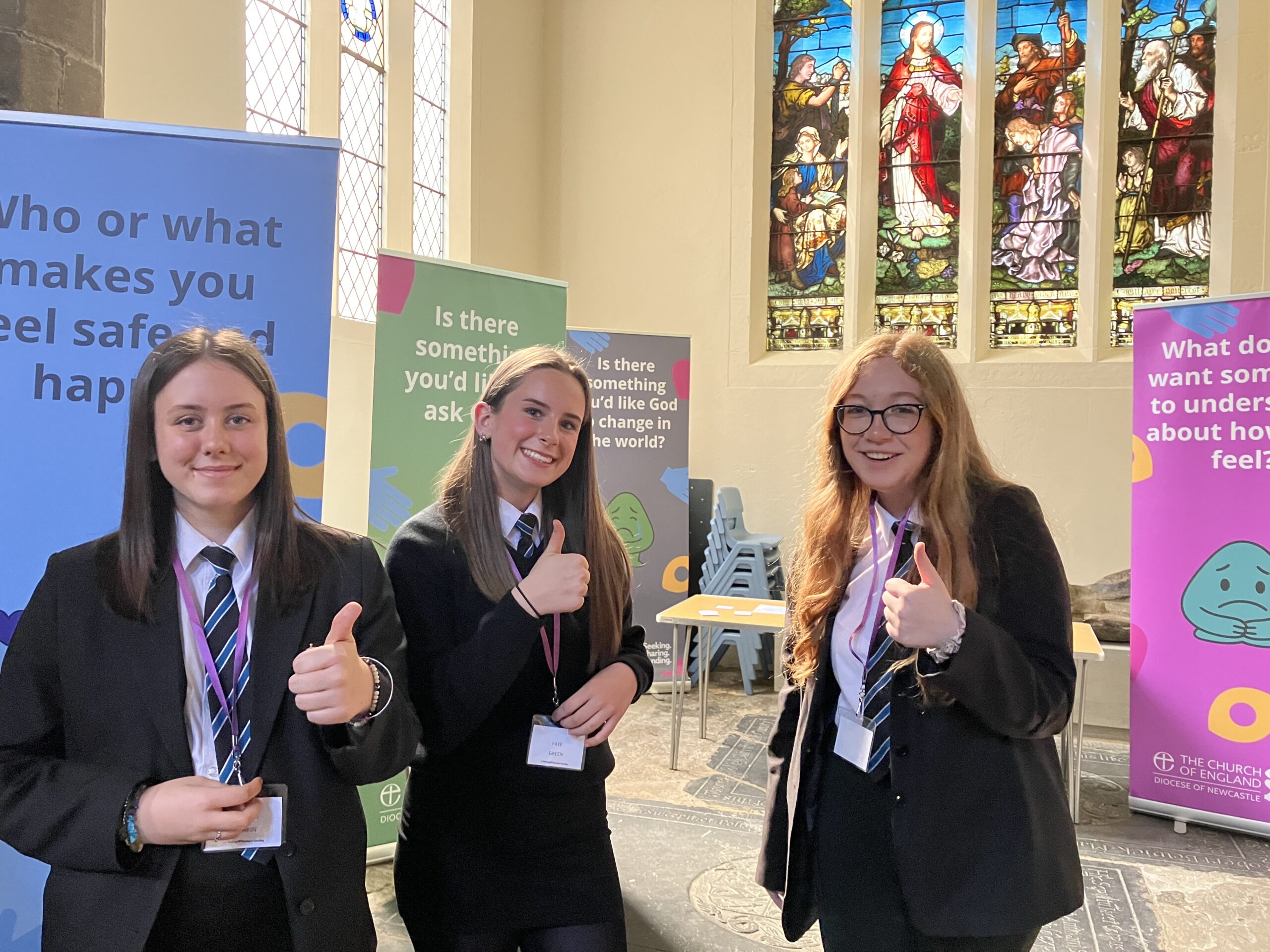

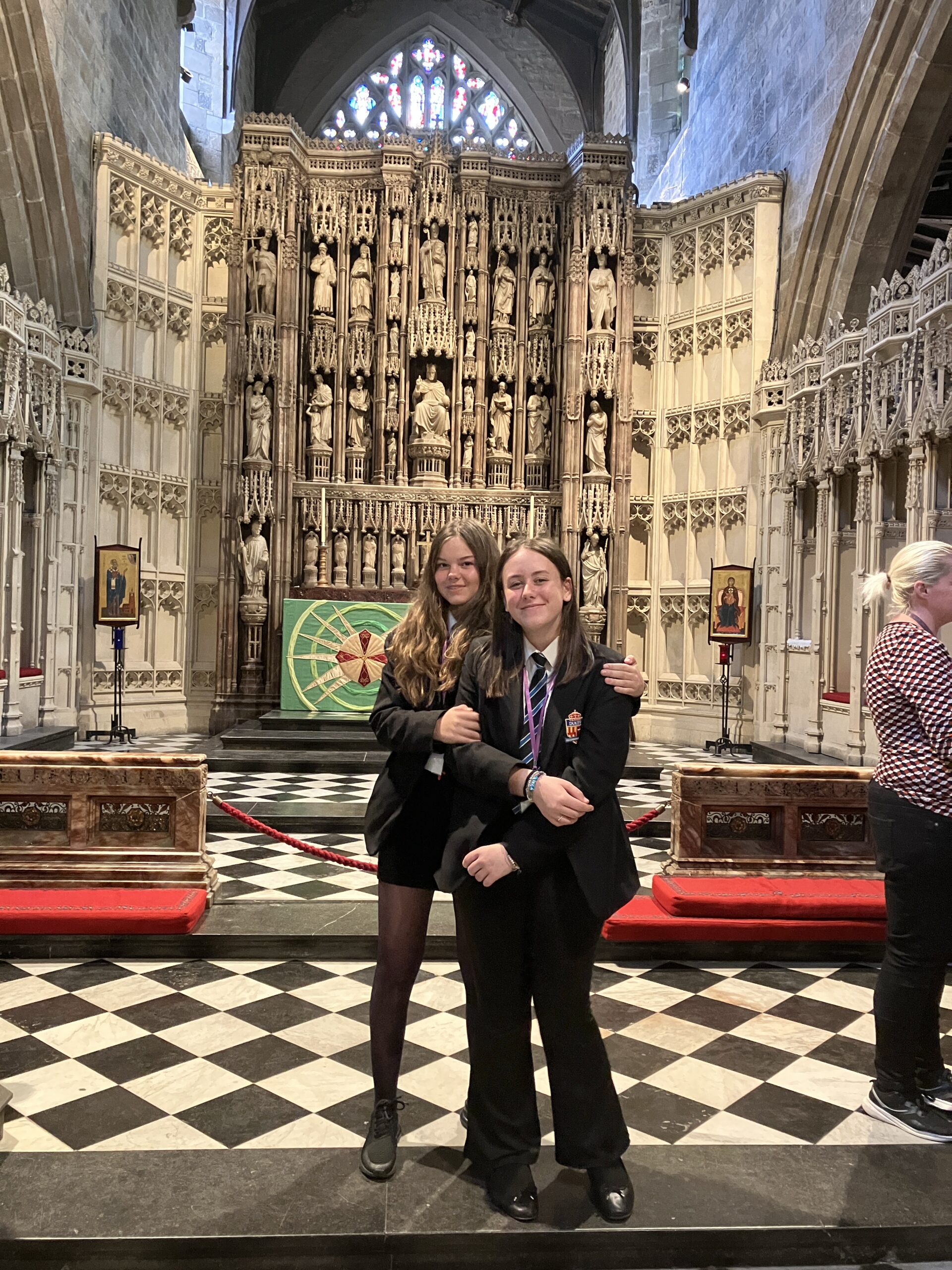
 The trip to the Cathedral was part of a Year 6 transition event, designed to help students feel more confident and excited about starting secondary school. It involved a series of workshops and activities aimed at easing any anxieties about the move. Our students played a key role in supporting the event, acting as mentors, helpers, and positive role models throughout the day.
The trip to the Cathedral was part of a Year 6 transition event, designed to help students feel more confident and excited about starting secondary school. It involved a series of workshops and activities aimed at easing any anxieties about the move. Our students played a key role in supporting the event, acting as mentors, helpers, and positive role models throughout the day.YouTube Kids is designed to be the safer cousin of the regular YouTube app; however, built-in risks continue to pose concerns. From targeted advertising to addictive design, there’s more going on behind the scenes than many realise. This week’s #WakeUpWednesday guide breaks it all down.
Whether it’s inappropriate content slipping past filters or tech-savvy kids bypassing parental settings, YouTube Kids still needs careful oversight. Our guide provides clear, easy-to-follow tips to help adults keep young users protected while still enjoying their favourite videos
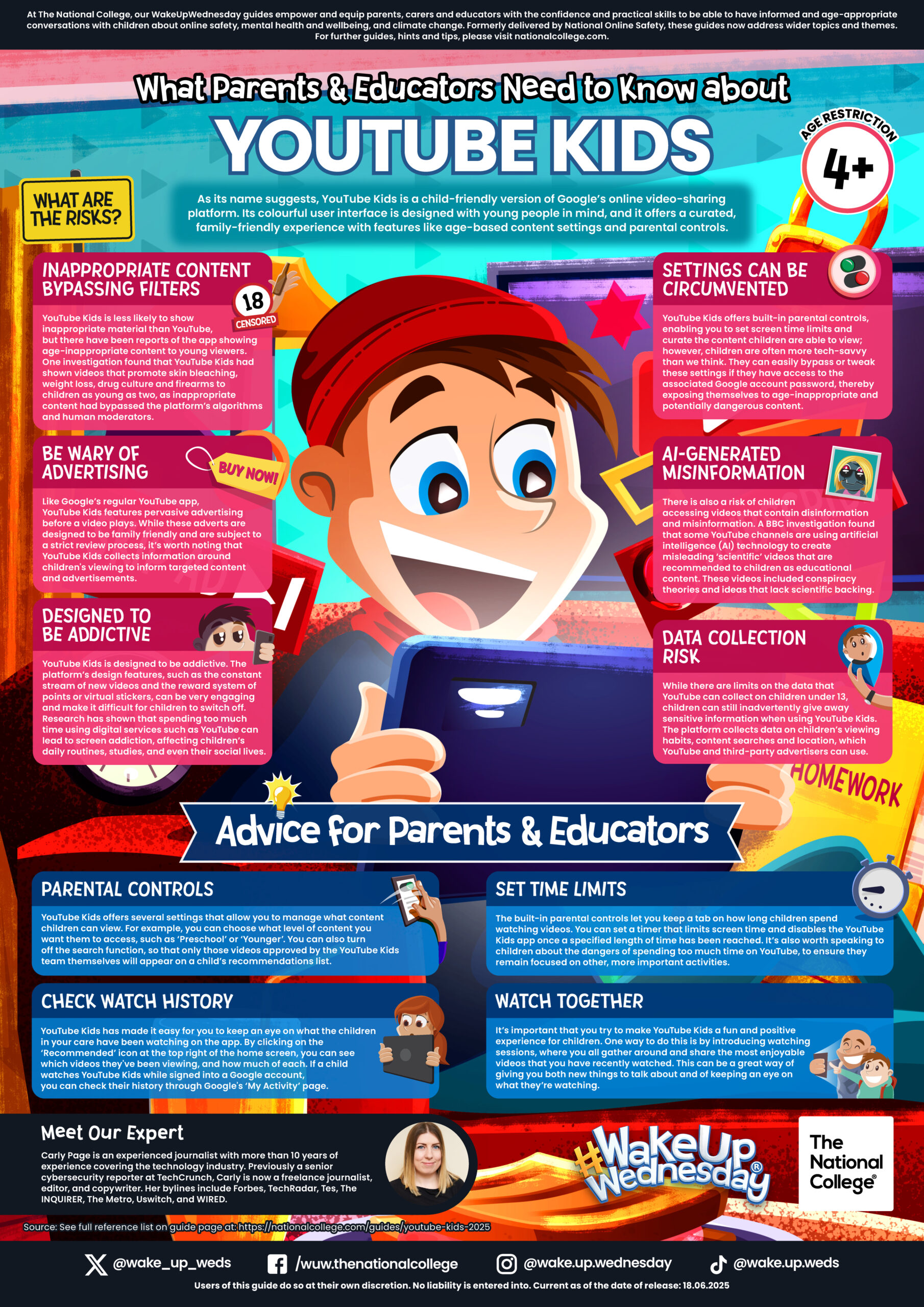
On this website we use first or third-party tools that store small files (cookie) on your device. Cookies are normally used to allow the site to run properly (technical cookies), to generate navigation usage reports (statistics cookies) and to suitable advertise our services/products (profiling cookies). We can directly use technical cookies, but you have the right to choose whether or not to enable statistical and profiling cookies. Enabling these cookies, you help us to offer you a better experience.